May 30, 2025 | 01:02 GMT +7
May 30, 2025 | 01:02 GMT +7
Hotline: 0913.378.918
May 30, 2025 | 01:02 GMT +7
Hotline: 0913.378.918
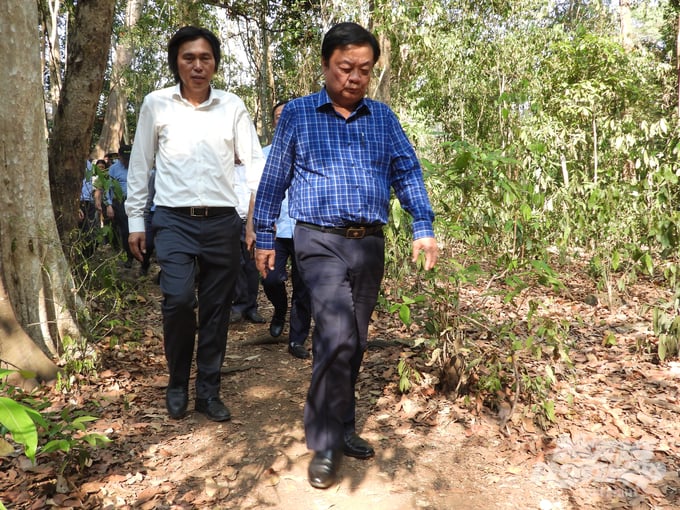
Minister of Agriculture and Rural Development Le Minh Hoan conducting an inspection in Cat Tien National Park. Photo: Tran Trung.
According to Mr. Pham Xuan Thinh, Director of Cat Tien National Park, the unit is managing and protecting over 72,000 ha of forest, including 1,655 species of plants and 1,730 species of animals.
Cat Tien National Park is currently one of the units with the most national and international titles such as World Biosphere Reserve; Ramsar Wetland - Bau Sau, and Special National Monument This is also a remaining rare tropical forest in Vietnam, including 3,000 ha of wetlands in the middle of natural forests, the habitat of freshwater crocodiles. The National Park currently has a savanna of about 300 ha, which is the habitat of many species of ungulates and pheasants. In particular, this is the only place in Vietnam where it is easy to observe many rare and precious wildlife species.
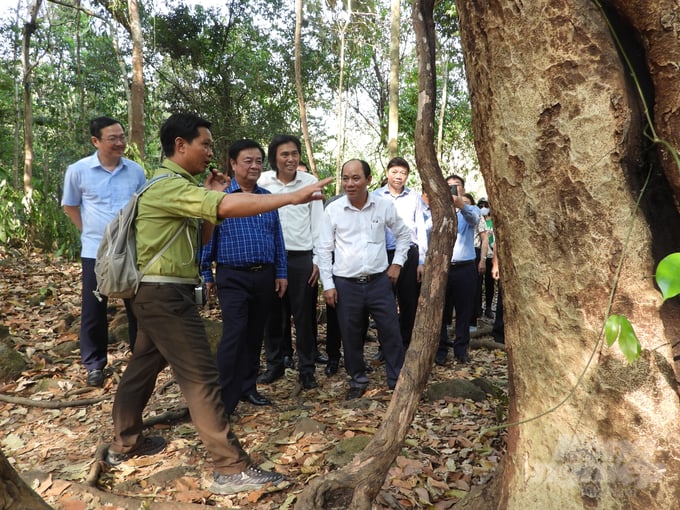
Cat Tien National Park is known as the World Biosphere Reserve recognized by UNESCO. Photo: Tran Trung.
"In addition to ample attention and support from the Ministry of Agriculture and Rural Development, Cat Tien National Park currently meets some difficulties as many forest management and protection goals require a long-term investment strategy of 10-20 years. Meanwhile, investment capital from programs, projects and research topics usually stops at a maximum of 3-5 years.
“Regarding infrastructure investment and exploitation of ecotourism resources in combination with forest management and protection, policies to attract the participation of the private sector are still limited and difficult to implement. There are also confusion and difficulties when using public assets and the forest environment for business purposes,” said Mr. Thinh.
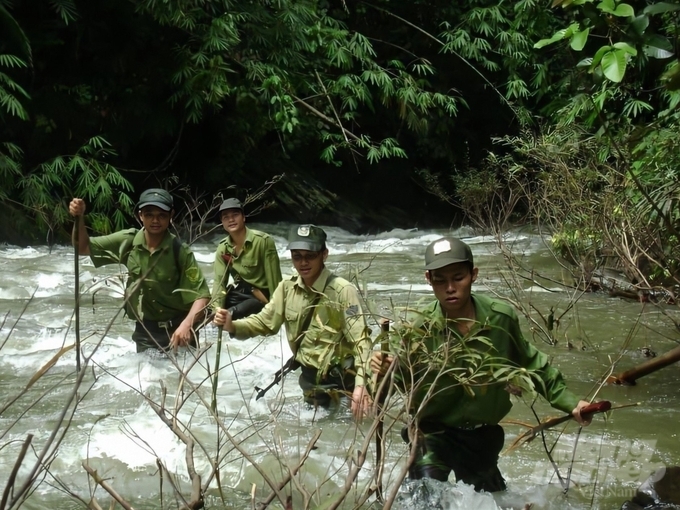
Forest rangers on patrol.
Cat Tien National Park has also set out plans for forest management and protection in the 2021-2030 period. Accordingly, the goal is to protect the 72,000 ha of forests and special-use forest land intact; conserve and protect 28 species of rare plants and 65 species of rare animals; reduce 5% of forest law violations by 2025; rescue 200 animals/year, successfully re-released 90% of rescued animals; develop 50 ha of new plantation forest and 950 ha of reforestation promotion zone, plant 10,000 scattered trees.
The national park aims to create jobs for 15,000 local workers, deploying livelihood support models for people in the buffer zone; increase the number of tourists by 15% in the 2021-2025 period, 20% in the 2026 - 2030 period; Increase revenue from forest environmental services and ecotourism by 10% in 2025 and 15% in 2030.
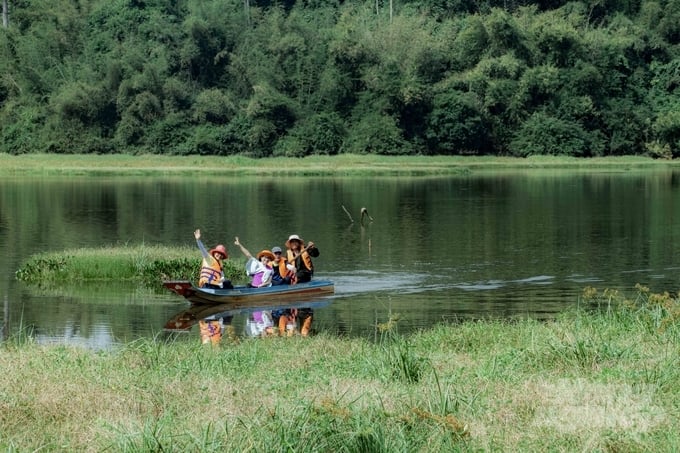
Tourists experiencing forest ecotourism at Cat Tien National Park.
To achieve these goals, the Director of Cat Tien National Park recommended that the Ministry of Agriculture and Rural Development continue to invest and complete infrastructure works, increase means and equipment for forest patrol and protection; adjust and improve the salary, allowance, and adequate treatment regime for forest rangers, personnel in charge of forest management and protection, and residential communities.
"Cat Tien National Park also hopes that domestic and international scientific agencies and organizations support and train staff who are capable of writing proposals and projects, construct biodiversity conservation projects, develop eco-tourism, and improve the living conditions of the community. We would like to mobilize all assistance to look for sponsors and receive technical advice from domestic and international experts and organizations," said Mr. Pham Xuan Thinh.
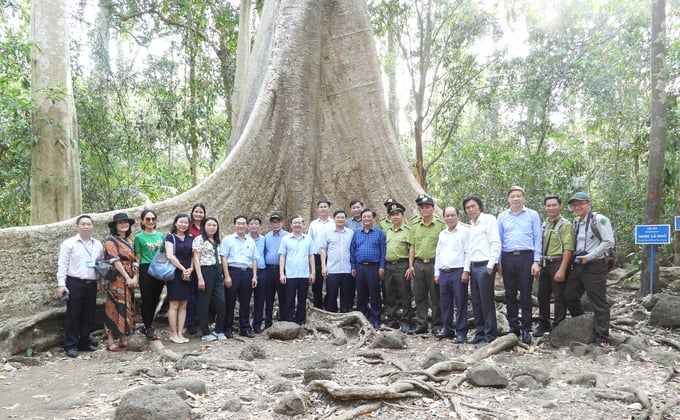
Minister of Agriculture and Rural Development Le Minh Hoan and the delegation at the root of a rare and precious over-700-year-old tree. Photo: Tran Trung.
Minister Le Minh Hoan asked the Cat Tien National Park Management Board to help local residents develop eco-tourism step by step in order to improve their living standards. "The forest does not belong to the state, but it belongs to all of us. The management board has been performing forest environmental services and eco-tourism very well. As for the forest ranger department, it is not their only job to carry out the task of forest protection assigned by the state. They also need to promote multi-value from forest economy.”
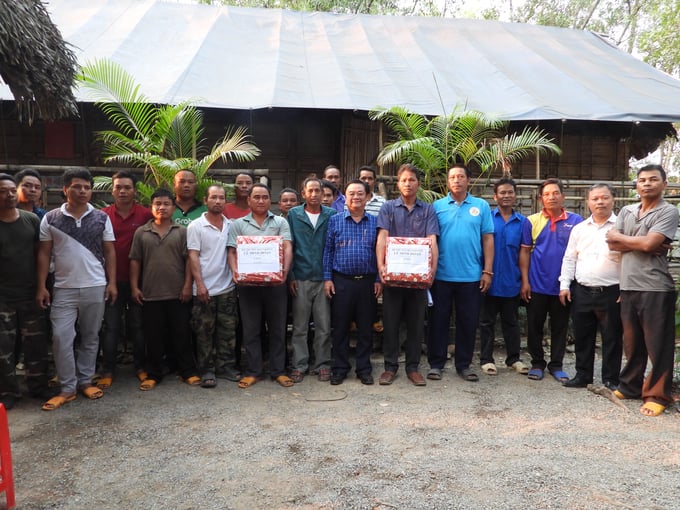
Minister Le Minh Hoan paid a visit and presented gifts to the indigenous community groups contracted to protect the forest. Photo: Tran Trung.
In the afternoon of the same day, Minister of Agriculture and Rural Development Le Minh Hoan and the delegation visited two groups of indigenous communities contracted to protect the forests of Cat Tien National Park. Besides visiting and encouraging the local people, the Minister recognized the efforts put into forest management and protection works of the Management Board of Cat Tien National Park in general and contracted communities in particular.
Translated by Samuel Pham
/2025/05/25/4127-3-073637_820.jpg)
(VAN) Thanks to the promotion from an FAO-implemented project, vegetable production in greenhouses in Moc Chau has seen strong development, from 1.5 hectares in 2021 to nearly 50 hectares in 2024.

(VAN) FAO has recently supported USD 140,000 to implement the project 'Risk mitigation human-animal interface risks through disease control initiatives in pig farming.'

(VAN) The People's Committee of Tra Vinh province has approved an adjustment to the investment policy for the Green Hydrogen Plant project, increasing its area to approximately 52.76 hectares.
![Reducing emissions from rice fields: [2] Farmers’ commitment to the soil](https://t.ex-cdn.com/nongnghiepmoitruong.vn/608w/files/news/2025/05/05/dsc08881jpg-nongnghiep-140632.jpg)
(VAN) Clean rice cultivation model in Thuong Tan commune, Bac Tan Uyen district, is assisting local residents in achieving sustainable agriculture by substantially reducing costs, increasing productivity, and protecting the environment.

(VAN) At the conference to disseminate Resolution No. 68, AgriS introduced its digital agricultural ecosystem and reaffirmed its commitment to accompanying the Government in promoting private sector development and sustainable agriculture.

(VAN) 'Blue Ocean - Blue Foods' initiative is designed to restore marine ecosystems and establish sustainable livelihoods for local communities by cultivating a minimum of 1,000 hectares of cottonii seaweed in the first three years.
/2025/05/21/4642-3-112707_603.jpg)
(VAN) The V-SCOPE project has made direct contributions to three out of six pillars of the Comprehensive Strategic Partnership between Vietnam and Australia.